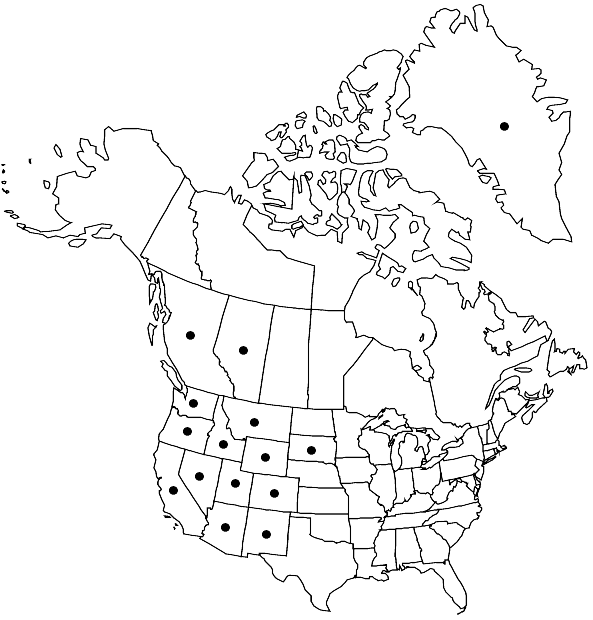Grimmia alpestris
Cat. Pl. Helv. ed. 2, 29. 1808,.
Plants in cushions or mats, yellow-green, glaucous-green to dark green, sometimes almost black. Stems 1–1.2 (–1.5) cm, central strand weak. Leaves narrowly lanceolate to ovatelanceolate, 1–1.8 × 0.2–0.6 mm, keeled, not plicate, margins plane proximally, incurved distally, awn 0.3–0.8 mm, costal transverse-section prominent, semicircular; basal juxtacostal laminal cells quadrate to short-rectangular, straight, thick-walled; basal marginal laminal cells quadrate to short-rectangular, straight, thick-walled, 1–2 rows hyaline or not hyaline; medial laminal cells quadrate to short-rectangular, straight, thin-walled; distal laminal cells 2-stratose, bulging or not, marginal cells 2-stratose. Sexual condition dioicous, perichaetial leaves not enlarged. Seta straight, 2–3 mm. Capsule occasionally present, exserted, yellow to brown, ovate to oblong-ovate, exothecial cells quadrate to short-rectangular, thick-walled, stomata absent, annulus of 1 row of quadrate, thick-walled cells, operculum conic to mammilate with a short obtuse beak, peristome present, fully-developed, split and perforated in distal half.
Habitat: Exposed acidic granite and sandstone
Elevation: moderate to high elevations (360-3300 m)
Distribution

Greenland, Alta., B.C., Ariz., Calif., Colo., Idaho, Mont., N.Mex., Nev., Oreg., S.Dak., Utah, Wash., Wyo., Eurasia
Discussion
Grimmia alpestris has a distribution similar to that of G. montana, being widespread and common on acidic rock in the warm, dry, western interior of North America from southern British Columbia and Alberta to California and Colorado. The other two North American species with bulging laminal cells, G. caespiticia and G. sessitana, both have capsules with stomata, readily separating capsulate specimens from G. alpestris. H. C. Greven (2003) reported that the capsules of G. alpestris are brown, with thick exothecial cell walls, and are smooth when empty, whereas those of G. sessitana are yellowish to light brown, with thin-walled exothecial cells, and are striolate when empty. The incurved margins and uniformly 2-stratose distal lamina of G. alpestris contrasts with the plane or one recurved margin and 1-stratose distal juxtacostal laminal cells of G. sessitana. The dioicous sexuality of G. alpestris also helps to separate these species. Some specimens of G. alpestris have leaves with streaks of thickened or multistratose cells; superficially these may appear to be plications. However, in transverse section they are readily separated from the truly plicate leaves of G. caespiticia. Furthermore, G. alpestris leaves are never cucullate, while those of G. caespiticia usually are. Grimmia alpestris is best separated from G. montana by its often bulging laminal cells and secondarily by its relatively uniform, quadrate to short-rectangular basal areolation. While G. donniana also has a uniform basal areolation, its cells are much longer and thin-walled, and its margins are plane throughout the length of the leaf.
Selected References
None.